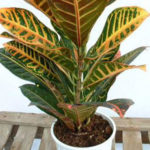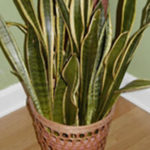Turn Your Home into a Tropical Oasis with Split-Leaf Philodendron
I have many favorite houseplants, but split-leaf philodendron (Monstera deliciosa) is at the top of the list. This plant always reminds me of those snowflakes we all made in elementary school by folding the paper and cutting. Also aptly called the Swiss cheese plant, the leaves of this indoor garden gem become dissected with deep splits and perforated with oval holes.
Easy to grow climbing plant
M. deliciosa’s striking heart-shaped foliage, along with its easy-to-grow, vigorous nature, make it an eye-catching focal point in the indoor garden. It is a fast-growing climbing plant that will reach—in ideal conditions—10 to 15 feet high and 8 feet across. In its native habitat, the jungles of Central America, split-leaf philodendron grows up into the rainforest canopy, climbing as high as 70 feet. It attaches itself to the trunks and branches of other trees with long tentacle-like aerial roots.
Rare edible Monstera deliciosa fruit

Although it rarely fruits indoors, M. deliciosa lives up to its name by producing a cone-like fruit, which is actually an unripened flower spike. The fruit matures in a little over a year, and the taste is described as a combination of banana, pineapple and mango. It should only be eaten when ripe; unripe fruit will cause irritation to the mouth and throat. To have luck growing the split-leaf philodendron, keep the following tips in mind:
Growing location for split-leaf philodendron
Place in a medium to bright location, but out of direct sun. Bright, filtered light is best. Plants in lower light tend to produce smaller leaves without splits or holes.
Watering
When it’s content, M. deliciosa is a big drinker. Water with lukewarm water as soon as the soil approaches dryness. De-mineralized or rainwater is best.
Training split-leaf philodendron
The split-leaf philodendron has cordlike aerial roots that emerge from the base of the plant. In its native habitat, it uses these roots to climb trees and absorb nutrients. These aerial roots can be trained to climb a support, such as a moss pole, or they can be directed into the soil. When there is an excess amount, you may cut some of them away.
You can find moss poles at the nursery or make your own by wrapping sphagnum moss around a wooden dowel and securing the moss in place with nylon thread or fishing line. Stick the pole in the center of the pot, being careful not to disturb roots. Water the plant from the top of the pole. This will keep the pole moist, and the aerial roots will absorb the moisture. If this is not possible, spray the pole with water, and water the plant base.
Fertilizing
Feed the split-leaf philodendron once a month with a dilute solution of a liquid organic fertilizer. Water or spray the moss pole with the fertilizer solution and water the plant base.
Repotting Monstera deliciosa
Repot younger M. deliciosa plants yearly and top-dress more mature specimens once they’ve reached the desired size. Use an organic soil-based potting medium that retains moisture.
Provide humidity
Although it is a jungle plant, split-leaf philodendron does tolerate dry air better than many plants. If your home’s humidity level is especially low, however, place the plant over a humidity tray. They also enjoy misting.
Pests on split-leaf philodendron
They aren’t common on split-leaf philodendrons, but watch for pests such as mealy bugs, scale and spider mites. Washing plant leaves regularly with a soft, damp cloth helps prevent these unwanted diners and keeps plants healthy overall.





